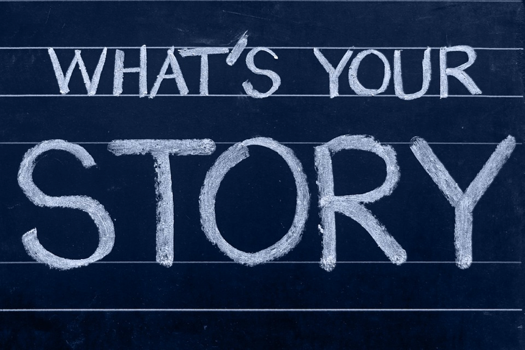Yes, it is that time of year—the first week of classes and start of a new semester. Many of us struggle with what to do. We could easily be that person that Gannon (2016) suggests starts the semester the absolute worst way—yes—it’s Syllabus Day! That is, most of our students expect this and have a script for the first day. It usually follows this formula: come to class, sit down, take roll, maybe do an ice-breaker that every other teacher does, get the syllabus, the teacher reads the syllabus, or if they are daring maybe puts it in a PowerPoint, engage in a brief discussion, then class is dismissed—hopefully early. I’m here to implore you—nay challenge you—to break this mold and do something different. There are so many different things that you can do to engage your students and to make a strong and positive first impression and I hope after reading this blog you will step out of your comfort zone and try a few of them.

First Impressions are Important!
As Legg and Wilson (2009) have demonstrated, first impressions even in an email, can lead to students having more positive beliefs about you as a person. So, what do you do to create a strong positive first impression? Legg and Wilson would suggest, prior to the start of the semester, sending out an email introducing yourself and the class. The email should be less formal, and more about you and who you are as a teacher. You can include the syllabus so that they can read it beforehand. Lyons et al. (2003) suggested that you should arrive early to class on first day and informally talk to students. At the same time, linger after class and answer any questions and talk to your students. Additionally, dress professionally and at the same time be comfortable and true to who you are (Gurung et al., 2014). If you can, change the physical environment of the classroom by rearranging desks to be more inclusive (e.g., circles or U shapes if possible as opposed to rows). Weimer (2015) suggests that you should discuss your commitment to teaching. Why do you do it? What do you love about it? To be a great teacher, what do you need from students (i.e., expectations)? Lastly, share your story. It is important to humanize yourself and let your students know that you are just a person like anyone else. For example, on the first day of class, I show a picture of my three girls, lovely wife, dogs, bunnies, horses and all the other creatures on our farm. I do this to convey that I, like them, have a life outside the classroom. And that I will be flexible and respectful of the fact that sometimes life just happens to both me and the students. Remember, this first day can truly impact the tone and culture of the class for the rest of the semester so make it count.

Be Active! Activities for the First Day
The godmother of teaching and learning, Maryellen Wiemer (2017) suggests that being active on the first day can create a positive and productive climate for learning. She suggests that you do activities such as:
- Best and worst classes: In this activity have students write on a piece of paper or on the board, what the best class they’ve had and what the teacher did to cause it to be the best class. Conversely, have student’s write about the worst class they’ve had and how the teacher caused it to be horrible. Then discuss and pledge to students how you will try to improve the course to become the best class J
- First day graffiti: In this activity, place flip charts all around the room with different sentence stems. For instance, I learn best in classes where the teacher... Or Here’s something that makes it easy to learn in a course… Have students walk around the room and respond to each stem, discuss their answers with one another, then debrief as a class.
- Syllabus Speed Dating: With syllabus in hand, have student sit across from one another and ask each other a question about the syllabus OR a question about themselves. Then, have students shift one seat down and ask another classmate one of the two questions.
- Irritating Behaviors: Theirs and Ours: Put students into groups and have them list the five things that teachers do to make it easy to learn. Share their answers with the class. Then below the list, list the 5 things that you and your colleagues have found students do that make it difficult to teach. Discuss how teaching is a reciprocal process and what you will do to make this relationship productive, respectful, and enjoyable.
Additionally, Lyons et al. (2003) suggested that there are several activities you can do in order to “whet students’ appetites for course content.” For example, have students individually list what topics or concepts they think are associated with your textbook title. Then have them get with another student to share their ideas and categorize each idea into chapter or module-like units. Have the dyads or groups name their chapters, then have them arrange them as a table of contents. Then discuss these table of contents with your students. Often it helps you identify misconceptions about the course, but also provides an opportunity for students to actively engage in the content of the course and with one another. Another idea is to connect course content by bringing in current news that is related to your course content. For instance, DACA is a very relevant issue on our campus and I was teaching educational psychology. I related the social, emotional, and cognitive impacts of DACA with students in the K-higher education setting. Finally, Linda Nilson (2003) suggests that teachers should develop a “common sense inventory” that students complete to highlight common course content or common misconceptions (e.g., right vs. left-brained thinkers in educational psychology). The moral of this story is that instead of reading the syllabus, engage students in activities that demonstrate the course content, your pedagogical beliefs, and how you will engage students throughout the course.
Set the Tone that will Last All Semester
If you normally read from your notes and only lecture, then maybe you should just read the syllabus. However, if this isn’t how you teach, why do it? Instead, teach something that is not on the syllabus and in the manner in which you normally teach. That is, if you do a lot activities—do activities. If you use humor as a pedagogical tool—then try to be funny—no seriously! If you use experiential learning in your class, do it on the first day! If you use the Socratic method, have a discussion with your students about the course, what they will do, etc. If you use cooperative learning a lot in your course, model this by doing a jigsaw puzzle or a think-pair-share. The point is, you get one chance at a first impression, so make it count and make it accurate to who you are as a teacher.

Additionally, Lyons and colleagues (2003) suggested that there are specific things that you can do to set the tone. For instance, establish a culture of feedback. I discussed this earlier, but let students know you are very interested in how they are doing in the course and how you are doing teaching the class. Typically, this is done in anonymous fashion, but the point is to create a partnership of learning between you and your students. Although, some disagree with this, I suggest making “homework 0 a mandatory office visit”—meaning, give them some low-stakes incentive to come and meet with you in your office. In this meeting, don’t necessarily talk about the class. Rather, get to know your students.
Moving Beyond the First Week
Now that you’ve established a positive, engaged, and productive culture of learning during that first week, what do you do the second week? Joyce Povlacs Lunde (n.d.) has several—in fact 101--things you can do beyond the first week of class. Povlacs Lunde divides what you can do to keep students engaged beyond the first week into seven categories. First, try to help students transition into your class. This includes things like how much time they will need to study for the course, give sample test questions and answers, talk to different students each class period to learn a little about them. Second, she suggests that we should direct students’ attention to the class. For example, give low-stakes pretests to reward students for reading, ask students to write down what they think the important issues are. Third, challenge students. Have student write down their own expectations for the course and their goals for learning. Engage in problem-based learning. Fourth, provide support. You can do this by providing study guides, be redundant, use non-graded feedback, etc. Fifth, encourage active learning. Use think-pair-shares, ask a lot of questions and wait for their answers, use classroom assessment techniques such as muddy points to understand where students are struggling, etc. Sixth, build a community. This is one of my most important goals. Learn their names. I know this is difficult in big classes but what I do is I have students give me a 3 X 5 card with a picture on the back and their name, year in school, major, and something that they like to do for fun. I then study them like flashcards. I guarantee they will appreciate it and feel like they are part of something special. Seventh, get their feedback on your class. There are several ways to do this. You can ask them to provide anonymous feedback on how to improve lessons and assessments. You can give them inventories such as the Professor-Student Rapport Scale (Wilson et al., 2010) or the Student-Engagement Questionnaire (Handelsman et al., 2005), or the Learning Alliance Inventory (Rogers, 2015). You can then use results from these to improve your instruction.
Never Stop Breaking the Mold!
Ok, so when do you discuss the syllabus? As I’ve discussed previously, send the syllabus to them prior to the start of the semester. I promise, they can read, but if you don’t assess them on it, they won’t. So, give a syllabus quiz. My colleagues and I (2016) suggest that you should create a syllabus quiz that requires students to be the teacher and ask questions that students typically ask (e.g., Professor, can I turn in assignments late?) We also suggest that you revisit the syllabus often. This should not be a one-shot lesson. In fact, I have my students’ pull-out the syllabus at least once a week to check in what is due, reading for next week, etc.
In the end, it is important to evolve and adapt your instructional practices to new students, new cultures, new and different courses. As such, you will develop some really great ways to break the mold based on what I discussed in the class, BUT you need to do more and will likely need to modify what you do next semester or quarter on the first day of class. I would like to leave you with a list of really good reads that further explain and provide more ways to change your script for that very important first day of class.
References and Must Reads!
Buirs, B. A. (2016, January 4th). First impressions: Activities for the first day of class. Faculty Focus: Higher Ed Teaching Strategies from Magna Publications. Retrieved from https://www.facultyfocus.com/articles/effective-teaching-strategies/first-impressions-activities-for-the-first-day-of-class/
Gannon, K. (2016, August 3rd). The absolute worst way to start the semester. The Chronicle of Higher Education. Retrieved from https://chroniclevitae.com/news/1498-the-absolute-worst-way-to-start-the-semester
Gurung, R. A., Kempen, L., Klemm, K., Senn, R., & Wysocki, R. (2014). Dressed to present: Ratings of classroom presentations vary with attire. Teaching of Psychology, 41, 349-353.
Handelsman, M. M., Briggs, W. L., Sullivan, N., & Towler, A. (2005). A measure of college student course engagement. The Journal of Educational Research, 98(3), 184-192.
Legg, A. M., & Wilson, J. H. (2009). E-mail from professor enhances student motivation and attitudes. Teaching of Psychology, 36(3), 205-211.
Lyons, R., McIntosh, M., & Kysilka, M. (2003). Teaching college in an age of accountability. Boston: Allyn and Bacon.
Morris, T., Gorham, J., Cohen, S., & Huffman, D. (1996). Fashion in the classroom: Effects of attire on student perceptions of instructors in college classes. Communication Education, 45, 135-148.
Nilson, L. (2003). Teaching at its best: A research-based resource for college instructors (2nd ed.). Bolton, MA: Anker Publishing.
Povlacs Lunde, J. (n.d.). 101 things you co in the first three weeks of class. Retrieved from http://www.unl.edu/gradstudies/current/teaching/first-3-weeks
Provitera McGlynn, A. (2001.) Successful beginnings for college teaching: Engaging students from the first day. Madison, WI: Atwood Publishing.
Raiscot, J. (1986). Silent sales. Minneapolis, MN: AB Publications.
Richmond, A. S. Gurung, R. A. R., & Boysen, G. (2016). An evidence-based guide to college and university teaching: Developing the model teacher. New York, NY: Routledge.
Rogers, D. T. (2015). Further validation of the learning alliance inventory: The roles of working alliance, rapport, and immediacy in student learning. Teaching of Psychology, 42, 19-25.
Weimer, M. (2013, August 13th) Five things to do on the first day of class. The Teaching Professor Blog. Retrieved from https://www.facultyfocus.com/articles/teaching-professor-blog/five-things-to-do-on-the-first-day-of-class/
Weimer, M. (2015, August 9th). The first day of class: A once-a-semester opportunity. Faculty Focus: Higher Ed Teaching Strategies from Magna Publications. Retrieved from https://www.facultyfocus.com/articles/teaching-professor-blog/the-first-day-of-class-a-once-a-semester-opportunity/
Weimer, M. (2017, July 19th). The first day of class activities for creating a climate for learning. Faculty Focus: Higher Ed Teaching Strategies from Magna Publications. Retrieved from https://www.facultyfocus.com/articles/teaching-professor-blog/first-day-of-class-activities-that-create-a-climate-for-learning/
Wilson, J. H., Ryan, R. G., & Pugh, J. L. (2010). Professor–student rapport scale predicts student outcomes. Teaching of Psychology, 37(4), 246-251.
